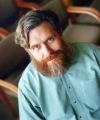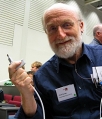SIGs & Satellite Meetings
ISMB 2010 will hold a number of one-day and two-day specialized meetings in computational biology. Pre-conference Satellite and SIG meetings will be held on Friday, July 9 and Saturday, July 10 and the Post-conference MGED Satellite meeting will be held on Tuesday, July 13 (afternoon), Wednesday, July 14 and Thursday, July 15. All meetings will be held at the Hynes Convention Center. Program information and registration details are noted below.
To inquire about the possibility of forming a new SIG for ISMB 2011 or beyond, please address your inquiry to This email address is being protected from spambots. You need JavaScript enabled to view it.
SATELLITE MEETINGS
Registrants are not required to register as delegates for the ISMB/ECCB 2009 conference to attend a Satellite Meeting. You may select "Satellite only" to register just for the 3Dsig Satellite Meeting or MGED Satellite Meeting. Please note Satellite Meeting registration does not allow access to the SIG Meetings.
The registration fee for the 3Dsig Satellite Meeting includes daily lunches (July 9 and July 10) and the 3Dsig Evening Session and Dinner (July 9). Registration for the MGED Satellite Meeting includes opening reception (July 13), breakfast and lunch (July 14 and July 15). MGED is offering two optional tutorials. You do not need to be registered to the MGED Satellite Meeting to register and pay for the MGED tutorials during the on-line registration process. Each Satellite Meeting participant will receive a booklet that includes meeting notes.
Two-Day Satellite Meeting
3Dsig: Structural Bioinformatics & Computational Biophysics Satellite Meeting - Friday, July 9 and Saturday, July 10
MGED Satellite Meeting - Tuesday, July 13 (afternoon), Wednesday, July 14 and Thursday, July 15)
SPECIAL INTEREST GROUP MEETINGS (SIGs)
SIG Registrants are not required to register as delegates for the ISMB 2010 conference to attend a SIG meeting. You may select "SIG only" to register just for a SIG.
Registering for a SIG allows you to move freely between all SIGs that take place on the same day as the meeting for which you are registered, to the extent that the room capacities can accommodate. SIG registration does not allow access to the Satellite Meeting.
Each SIG participant will receive a booklet that includes handouts from all SIGs and daily lunches are included.
Please register for the SIG in which you are most interested so that we can assign SIGs to larger and smaller rooms as appropriate.
NOTE: One-Day SIG registrants are able to participate in SIG meetings only on the day for which they have registered unless registering for two one-day SIG meetings.
One-Day SIGs (Pre-conference) - Friday, July 9, 2010
BioPathways
DAM: Data and Analysis Management - CANCELLED
One-Day SIG (Pre-conference) - Saturday, July 10, 2010
BioLINK
BioReg SIG: Bioinformatics for Regulatory Genomics
Two-Day SIG - Friday, July 9 and Saturday, July 10, 2010
Alternative Splicing AS-SIG
Bioinformatics Open Source Conference (BOSC)
BioOntologies
HiTSeq: High Throughput Sequencing
M3: Metagenomics, Metadata and Metaanalysis
SATELLITE MEETINGS
3Dsig: Structural Bioinformatics & Computational Biophysics Satellite Meeting
URL: http://bcb.med.usherbrooke.ca/3dsig10/
Date: Friday, July 9 and Saturday, July 10
Start time: 8:30 a.m. - End time: 6:30 p.m.
Room Location: 208
Click here to view the corresponding feed entries in FriendFeed.
*Friday, July 9 - 3Dsig Dinner and Evening Presentation at the:
Boston Sheraton Hotel - Constitution Ballroom A
6:45 p.m. Reception (Cash bar)
7:30 p.m. Dinner
3Dsig, the annual ISMB satellite meeting on structural bioinformatics and computational biophysics has become the largest meeting in our growing field.
This year we are excited to bring a top-notch group of keynotes including Joel Sussman (WIS), James Bowie (UCLA-DOE), Amy Keating (MIT), George Makhatadze (RPI), Kim Sharp (UPenn), Deverajan (Dave) Thirumalai (U. Maryland) and Andrej Sali (UCSF).
In addition to these keynotes our diverse program will include 20 talks selected from submitted abstracts, our traditional dinner as well as a daily discussion and a daily unique laptop/poster session. As you may appreciate from participating in previous 3Dsig’s or from glimpsing at their online proceedings, we have a high-quality mix of multidisciplinary presentations focused on the computational representation, characterization, analysis and prediction of macromolecular structures.
Relevant topics include:
1) Structure representation, predication and structural genomics.
2) 3D databases and datamining.
3) Structure-based function prediction.
4) Evolution studied through structures.
5) Docking, analysis, prediction and simulation of biomolecular interactions such as protein-protein, protein-ligand and protein-nucleic-acid.
6) Prediction and analysis of domains.
7) Membrane protein structure analysis and prediction.
8) The role of geometry and energetic and biomolecular folding, function and dynamics.
9) Analysis and simulation of dynamic aspects of biomolecular structures.
10) Structure-based drug design and pharmacophore analysis.
We look forward to meeting you at 3Dsig http://bcb.med.usherbrooke.ca/3dsig10/
Coordinator(s):
Rafael Najmanovich
Université de Sherbrooke, Canada
This email address is being protected from spambots. You need JavaScript enabled to view it.
Ilan Samish
University of Pennsylvania, USA
This email address is being protected from spambots. You need JavaScript enabled to view it.
top
MGED Satellite Meeting: The 13th International MGED Meeting, focusing on translational genomics and high throughput sequencing
URL: http://www.mged.org or http://cccb.dfci.harvard.edu/mged13/
Date: Tuesday, July 13 (afternoon), Wednesday, July 14 and Thursday, July 15
Start time: 8:30 a.m. - End time: 6:30 p.m.
Room Location: 302/304
Click here to view the corresponding feed entries in FriendFeed.
The MGED Society is an international organization of biologists, computer scientists, and data analysts that aims to facilitate biological and biomedical discovery through data integration. Our approach is to promote the sharing of large data sets generated by high throughput functional genomics technologies. Historically, MGED began with a focus on microarrays and gene expression data. However, the scope of MGED now includes data generated using any technology when applied to genome-scale studies of gene expression, binding, modification and other related applications.
Attendees will also be able to participate in MGED tutorials and can register during the on-line registration process. Tutorials will be held on Wednesday, July 14 from 8:00 a.m. - 11:30 a.m.
MGED Tutorial 1: $75.00 – Deep Sequencing Analysis (Steffen Durinck, UC Berkeley; Cole Trapnell, UMCP; Angela Brooks, UC Berkeley)
MGED Tutorial 2: $75.00 – RNA-seq data analysis using R and Bioconductor (Angela Goncalves and Gabriella Rustici, EBI, UK)
MGED Tutorial 3: $25.00 – Meta-analysis of Genomic Data (Aedin Culhane, DFCI: Misha Kapushesky, EBI; Kasper Lage, MGH; Soumya Raychaudhuri, Broad)
MGED Tutorial 4: $25.00 – MAGE-TAB + Annotare Tutorial (Ravi Shankar, Stanford and Helen Parkinson, EBI) - Cancelled
Coordinator(s):
Gavin Sherlock (chair)
Stanford University, USA
This email address is being protected from spambots. You need JavaScript enabled to view it.
John Quackenbush
Harvard University, USA
This email address is being protected from spambots. You need JavaScript enabled to view it.
Chris Stoeckert
University of Pennsylvania, USA
This email address is being protected from spambots. You need JavaScript enabled to view it.
SPECIAL INTEREST GROUP MEETINGS (SIGs)
Alternative Splicing (AS-SIG)
URL: www.alternative-splicing.org/as-sig-10/
Date: Friday, July 9 and Saturday, July 10, 2010
Start time: 8:30 a.m. - End time: 6:30 p.m.
Room Location: 202
Click here to view the corresponding feed entries in FriendFeed.
To view the 2010 Program Schedule click here http://www.alternative-splicing.org/as-sig-10/AS-SIG2010_program_only_v4.pdf
“Emerging connections between chromatin, non-coding RNA and splicing”
Alternative splicing is highly regulated, as it can occur specifically in different cell or tissue types, and is linked to many cellular processes such as cell differentiation, sex-determination and apoptosis. Importantly, defects in either cis-acting regulatory elements or trans-acting factors can lead to aberrant splicing and lead to human disease.
Recent advances in sequencing technologies have provided the opportunity to obtain genome wide information on the regulation of RNA splicing by specific factors and in various conditions. Additionally, recent analyses have shown a relation between the chromatin structure of the DNA and the regulation of RNA in transcription and splicing. There is now plenty of evidence that the configuration of the chromatin influences the regulation of alternative splicing, by affecting the elongation rate of the RNA polymerase II (PolII) or by helping or hindering the recruitment of specific splicing-factors. Consistent with these evidences, computational analyses have also indicated that the actual positioning of nucleosomes may be key in the recognition of the exon-intron structures in the pre-mRNA.
In parallel with these advances, recent genome-wide studies have shown that the human genome is pervasively transcribed and is capable of producing many small RNAs (sRNAs). These sRNAs, which include micro-RNAs (miRNAs), small interfering RNAs (siRNAs), PIWI-interacting RNAs (piRNAs), do not encode for protein and have potentially multiple regulatory roles. They can regulate genes and genomes at different levels, including chromatin structure, transcription, RNA processing, RNA stability and translation. The biogenesis of some of the sRNAs is well established, like for miRNAs, but it is less clear in other cases. For instance, some of these small RNAs have been associated to the promoter regions of genes and are independent of the miRNA processing machinery. These new regulatory mechanisms provide a new view on the regulation of RNA expression.
During the last few years, a connection between small RNAs, chromatin configuration and splicing has emerged. Some of the sRNAs can target internal gene regions and induce chromatin marks that affect the rate of transcriptional elongation, therefore affecting the splicing of pre-mRNAs. This three-way crossing between the structure of chromatin, the activity of small RNAs and the post-transcriptional regulation of RNA, in particular, splicing, opens up a new view of the regulation of gene expression. In this meeting we aim to provide an opportunity to bring world experts in these three fields to discuss in common the recent advances and put forward new ideas. Moreover, as these studies require a very strong computational analysis of genome-wide high-throughput, we expect that the context of the ISMB conference, and the participation of computational experts, will give rise to a fruitful interaction and a excellent basis for building a community of shared resources and tools in this new raising field.
Coordinator:
Eduardo Eyras
Pompeu Fabra University & ICREA, Spain
This email address is being protected from spambots. You need JavaScript enabled to view it. or This email address is being protected from spambots. You need JavaScript enabled to view it.
top
11th Annual Bioinformatics Open Source Conference (BOSC)
URL: http://www.open-bio.org/wiki/BOSC_2010
Date: Friday, July 9 and Saturday, July 10, 2010
Start time: 8:30 a.m. - End time: 6:30 p.m.
Room Location: 207
Click here to view the corresponding feed entries in FriendFeed.
The Bioinformatics Open Source Conference (BOSC) is sponsored by the Open Bioinformatics Foundation (O|B|F), a non-profit group dedicated to promoting the practice and philosophy of Open Source software development within the biological research community. To be considered for acceptance, software systems representing the central topic in a presentation submitted to BOSC must be licensed with a recognized Open Source License, and be freely available for download in source code form. Many open source bioinformatics packages are widely used by the research community across many application areas and form a cornerstone in enabling research in the genomic and post-genomic era. Open source bioinformatics software has facilitated rapid innovation, dissemination, and wide adoption of new computational methods, reusable software components, and standards. We have a number of exciting sessions planned for BOSC 2010:
-
OpenBio SolutionChallenge: Bioinformatics library providers will compete to solve a shared biological problem demonstrating the utility of their toolkit alongside other developers. This will provide a fun, tutorial-style overview of the Bio* projects. Conference attendees will vote on their favorite solution.
-
Approaches to analyzing high-throughput ‘omics data: presentation of projects that use the MapReduce framework either for parallelized analysis of possibly terabyte size data sets from next-gen sequencing and mass spec proteomics or parallelization of bioinformatics algorithms in general.
-
Cloud-based approaches to improving software and data accessibility: the emergence of cloud computing has made highly scalable cluster computing available to computational biologists. Services such as the Amazon Elastic Compute Cloud combined with publicly available datasets promise to lower the overhead to participate in large scale data analyses. Talks will focus around how the community can build up resources and datasets for cloud infrastructure, as well as the sharing of insights, and the contribution of implemented workflows.
-
The Semantic Web in open source bioinformatics: emerging Semantic Web technologies promise to improve data interoperability and accessibility. Session talks will be from researchers using RDF and related technologies in their research and data analyses, with a special focus on documenting how these tools can contribute to open data access.
-
Open Source Software: a session for open source software that does not fit neatly into the above categories.
The abstract deadline for these sessions is April 15, 2010. Submit abstracts to http://events.open-bio.org/BOSC2010/
In addition, there will be a two-day CodeFest preceding BOSC this year, we are offering three student travel fellowships, and we will be publishing the first-ever BOSC Proceedings in BMC Bioinformatics. See our web site at http://www.open-bio.org/wiki/BOSC_2010 for details.
BOSC Coordinator:
Kam D. Dahlquist, Ph.D.
Loyola Marymount University
Los Angeles, California, USA
Email: This email address is being protected from spambots. You need JavaScript enabled to view it. or This email address is being protected from spambots. You need JavaScript enabled to view it.
top
Bio-Ontologies: Semantic Applications in Life Sciences
URL: www.bio-ontologies.org.uk
Date: Friday, July 9 and Saturday, July 10, 2010
Start time: 9:00 a.m. - End time: 6:00 p.m.
Room Location: 203
Click here to view the corresponding feed entries in FriendFeed.
Bio-Ontologies: provides a forum for discussion of the latest and most cutting-edge research in ontologies and more generally the organisation, presentation and dissemination of knowledge in biology. It has existed as a SIG at ISMB (http://www.iscb.org/ismb2010) for 12 years now, making it one of the longest running.
Recognizing the increasing synergy in medical and biological ontology research and development, biomedical Knowledge Representation Working Group (KR-WG) of the American Medical Informatics Association (AMIA) has chosen the Bio-Ontologies SIG as the venue of the KR-WG's biannual knowledge representation in medicine meetings (KR-MED, www.kr-med.org). In order to attend the biannual KR-MED meeting, please register for the Bio-Ontology SIG.
We are interested in approachs to organising, presenting and disseminating knowledge in life sciences.
We invite papers in traditional areas, such as the biological applications of ontologies, newly developed Bio-Ontologies, and the use of ontologies in data sharing standards. In addition, We invite submissions on a wide range of topics including, but not limited to:
- Semantic and/or Scientific Wikis
- Collaborative Curation Platforms
- Collaborative Ontology Authoring and Peer-Review Mechanisms
- Automated ontology learning
- Mapping between ontologies
- Biological Applications of Ontologies
- "Flash updates" on Newly Developed or Existing Bio-Ontologies
- Use of Ontologies in Data Standards
- Semantic Web enabled applications (such as for enhanced publishing and for capturing scientific discourse)
- Research in Ontology Languages and its Effect on Bio-Ontologies
Each year, we focus on a specific theme in our keynote and panel sessions. This year's keynote speakers will by Andrew Rzhetsky (July 10th) and Tim Clark (July 9th). The panel on July 10th will be held jointly with the BioLink SIG. Panel details for July 9th will be announced soon.
Key Dates:
- Submissions Due: April 16th (Friday)
- Notifications: May 7th (Friday)
- Final Version Due: May 14th (Friday)
- Workshop: July 9th-10th (Friday and Saturday)
Coordinator(s):
Nigam Shah
Stanford University, USA
This email address is being protected from spambots. You need JavaScript enabled to view it.
Susanna-Assunta Sansone
European Bioinformatics Institute (EBI), UK
This email address is being protected from spambots. You need JavaScript enabled to view it.
Susie M Stephens
Johnson & Johnson Pharmaceutical Research & Development, USA
This email address is being protected from spambots. You need JavaScript enabled to view it.
Larisa Soldatova
University of Aberswyth, UK
This email address is being protected from spambots. You need JavaScript enabled to view it.
General Contact: This email address is being protected from spambots. You need JavaScript enabled to view it.
top
BioLINK
URL: http://sites.google.com/site/biolinksig2010/
Date:Saturday, July 10, 2010
Start time: 8:30 a.m. - End time: 6:30 p.m.
Room Location: 201
Click here to view the corresponding feed entries in FriendFeed.
The Annual Meeting of the ISMB BioLINK Special Interest Group: Linking Literature, Information and Knowledge for Biology. Special Interest Group on Text Mining.
The BioLINK SIG meeting has been regularly held in association with the ISMB conference since 2001, focusing on the development and application of resources and tools for biomedical text mining. The SIG is interdisciplinary in nature focusing on the community of users, including biomedical experimentalists, researchers and database curators, who are interested in using text mining methods as part of their tools.
The meeting includes invited talks, reports from recent evaluations and workshops, as well as a poster session. We will encourage posters with short abstracts presenting new/preliminary work, and dedicate some time to discussing them.
We are putting together a program that will be relevant to text mining experts and the wider ISMB crowd. The workshop will include talks and panel discussions with experts in the biomedical field and industry to discuss their work and how they apply text mining to their advantage. The focus will be on relevant applications of text mining in the biomedical field like for example the use of text mining methods in interesting ways for high-throughput data analysis or drug repositioning. In addition we plan to invite a senior computational linguistics researchers to give a high-level perspective on the state of the art in natural language processing.
We anticipate a productive workshop that will facilitate discussion and exchange of ideas by bringing together multiple communities: the users of text mining tools, including curators of biological databases, bench scientists and bioinformaticians; and the researchers applying natural language processing, ontologies, text mining, image analysis, information extraction and retrieval to problems in the biomedical domain.
Information about last year's meeting is available at the BioLINK09 web site [http://research.cs.queensu.ca/biolink09/index.html]
Coordinator(s):
Christian Blaschke
Bioalma, Spain
This email address is being protected from spambots. You need JavaScript enabled to view it.
Lynette Hirschman
Mitre, USA
This email address is being protected from spambots. You need JavaScript enabled to view it.
Hagit Shatkay
Queen's University, Canada
This email address is being protected from spambots. You need JavaScript enabled to view it.
Alfonso Valencia
CNIO, Spain
This email address is being protected from spambots. You need JavaScript enabled to view it.
top
BioPathways
URL: www.biopathways.org/events/ISMB10/ISMB10-BPC-Program.html
Date: Friday, July 9, 2010
Start time: 8:30 a.m. - End time: 6:30 p.m.
Room Location: 201
Click here to view the corresponding feed entries in FriendFeed.
The 2010 BioPathways SIG meeting will be organized around the following two themes:
- Large networks dynamics, extrinsic, intrinsic and compositional noise
High level static views give a sense of the design of biomolecular networks but they do not accomodate key dynamical aspects. This session will examine the complex interplay between large topologies and the dynamics they host and generate. This poses a certain number of systemic questions which the various speakers will discuss: dynamic modularity, robustness and the lack thereof, dose-dependencies, how to express and structure background effects, and how to address quantitatively promiscuity in biological networks.
- Tools and concepts for combinatorial pathways
This session will centre on the tools and concepts needed to formalise, and computationally analyse biological systems of combinatorial complexity. Specifically, we envisage to treat three aspects: rule- and agent-based approaches for the quantitative representation of combinatorial molecular interactions including formal statistical verification; interplay between the spatial and combinatorial aspects of biological networks; case studies where these methods have shown particularly useful, as in the modeling of combinatorial promoters and fine-grained modelling of DNA-diffusive processes.
In addition there will be a session on Data-bases and tools with a focus on resources such as PathwaysCommons, NCI Pathways, Reactome, and KEGG, all available via the Biopax format and new tools for querying and exploring pathways in sophisticated ways.
As the date of SIG approaches we will post more details about the programme on our website.
If you wish to offer a talk, please send a circa 250-word abstract to This email address is being protected from spambots. You need JavaScript enabled to view it. by April 30, 2010. Authors are encouraged to add URLs of web-based tools, and selected tools will be featured on the BioPathways web site. Presenters will be notified no later than May 21, 2010.
We look forward to seeing you at BioPathways 2010 - from the organizers:
Chair, Vincent Danos
University of Edinburgh, Scotland
Joanne Luciano
Predictive Medicine, Inc., USA
Vtor Martins dos Santos
Helmholtz Centre for Infection Research
Eric Neumann
Clinical Semantics Group, USA
Vincent Schachter
Total, France
Peter Swain
University of Edinburgh, Scotland
Coordinator(s):
Vincent Danos
University of Edinburgh, Scotland
This email address is being protected from spambots. You need JavaScript enabled to view it.
top
BioReg SIG: Bioinformatics for Regulatory Genomics
URL: http://light.ece.ohio.edu/bioreg/
Date: Saturday, July 10, 2010
Start time: 8:30 a.m. - End time: 6:30 p.m.
Room Location: 200
Click here to view the corresponding feed entries in FriendFeed.
Regulatory genomics involves the study of the genomic 'control system,' which determines how, when and where to activate the 'blueprint' encoded in the genome. BioReg SIG focuses on bioinformatics for regulatory genomics. An important goal is to foster a community wherein scientists collaborate to solve research problems.
The focus of the BioReg SIG will vary from year-to-year. In 2010, the SIG will bring together researchers to consider the problem of pattern discovery for prediction/identification of functional elements in sequenced genomes. The ENCODE project identified 5 types of regulatory elements: promoters, enhancers, silencers, insulators and locus control regions. Additional categories that have yet to be fully elucidated include replication origins, structural features, and noncoding and anti-sense transcripts. Such classes of functional elements have been assessed for sequence conservation with varying levels of success. Obviously, there is a need for new computer models and algorithms that discriminate features within these classes, which can be applied toward the discovery of new genomic elements.
The specific topics that will be covered in the 2010 SIG include the following:
• algorithms that are applicable to large genomes,
• statistical models that are useful for identifying functional genomic elements, and
• benchmarks and case studies that are useful for evaluating algorithms and statistical models.
Keynote Speakers:
ENCODE/modENCODE: Regulatory Genomics and Epigenomics in Human and Fly
Manolis Kellis
MIT, Cambridge, USA
http://mit.edu/manoli/
Deciphering Transcriptional Regulation via ChIP-Seq Data
Tim Bailey
University of Queensland, Australia
http://research1t.imb.uq.edu.au/bailey/t.bailey/
Coordinator(s):
Finn Drabløs
Norwegian University of Science and Technology, Norway
This email address is being protected from spambots. You need JavaScript enabled to view it.
Sophie Schbath
Institut national de la recherché Agronomique, France
This email address is being protected from spambots. You need JavaScript enabled to view it.
Lonnie R. Welch
Ohio University, USA
This email address is being protected from spambots. You need JavaScript enabled to view it.
DAM: Data and Analysis Management - Cancelled
We greatly regret to inform you that it will be necessary to cancel the Data and Analysis Management SIG. Fortunately, there will still be ample interaction around these topics at this years ISMB, in particular the high-throughput sequencing SIG has been expanded this year, and BOSC (the Bioinformatics Open Source Conference) will be featuring a session of cloud computing for bioinformatics. We'd like to encourage you to participate in one of these SIGs, alternatively refunds on your registration will be offered.
top
HiTSeq: High Throughput Sequencing
URL: http://www.hitseq.org
Date: Friday, July 9 and Saturday, July 10, 2010
Start time: 8:30 a.m. - End time: 6:30 p.m.
Room Location: 210
Click here to view the corresponding feed entries in FriendFeed.
While the promise of high throughput sequencing (HTS) technologies has become a reality, realizing the full promise of these technologies requires the development of methods that can analyze the raw reads, quality values, and intensities generated by the sequencers to infer biological meaning: genome variation, novel transcript discovery, RNA expression analysis, and metagenomic analysis. HiTSeq brings together computer scientists, biologists, and bioinformaticians working on the computational challenges of HTS data analysis.
We are interested in presentations describing methodology to infer various polymorphisms with HTS data, including SNPs and structural variation (both polymorphisms in a population and somatic changes, as within tumor/normal paired samples). Another exciting application of HTS technologies is RNA sequencing, which is currently used for RNA expression, de-novo transcriptome sequencing for non-model organisms, and novel transcript discovery.
One of the key developments in the HTS field is the emergence of 3rd generation, single molecule real time sequencing technologies. These promise longer reads, quicker turnaround times, and valuable kinetic information that enables direct detection of base. The diversity of applications and flexibility of single molecule real time sequencing technologies will demand novel approaches to modeling sequencing data in order to fully leverage the information (e.g., kinetic information associated with each read) obtained from these platforms. Programs and algorithms developed for Sanger and HTS data will need to be modified or reinvented to match the characteristics of real time single molecule data, and managing and organizing the data in ways that facilitate interpretation and data mining applications will also be a challenge.
HTS technology is also commonly used for discovery of transcription factor binding sites (and nucleosome positioning) using CHiP-SEQ, for methylation profiling, and for analysis of metagenomic samples. HiTSeq welcomes presentations on any of these topics, as well as other important methods related to HTS technologies.
Coordinator(s):
Inanc Birol
British Columbia Cancer Agency, Canada
Michael Brudno
University of Toronto, Canada
Francisco De La Vega
Life Technologies, USA
Eric Schadt
Pacific Biosciences, USA
Jens Stoye
Universität Bielefeld, Germany
Contact: This email address is being protected from spambots. You need JavaScript enabled to view it.
top
M3: Metagenomics, Metadata and Metaanalysis & BioSharing SIG
URL: http://gensc.org/gc_wiki/index.php/M3_&_BioSharing
Date: Friday, July 9 and Saturday, July 10, 2010
Start time: 8:30 a.m. - End time: 6:30 p.m.
Room Location: 209
Click here to view the corresponding feed entries in FriendFeed.
There are now thousands of genomes and metagenomes available for study (see the Genomes Online Database (http://www.genomesonline.org/). Interest in improved sampling of diverse environments (e.g. ocean, soil, sediment, and a range of hosts) combined with advances in the development and application of ultra-high throughput sequence methodologies is set to vastly accelerate the pace at which new data sets are generated. While genomes represent the full genetic (DNA) complement of a single organism, metagenomes represent the DNA of an entire community of organisms. Genome and metagenomes are now also being complemented with studies of metatranscriptomes (community transcript profiles) and metaproteomes (community protein profiles). Combined, these data hold the promise of unparalleled insights into fundamental questions across a range of fields including evolution, ecology, environment biology, health and medicine. To fully exploit the promise of these data we need both scientific innovation and community agreement on how to provide appropriate stewardship of these resources for the benefit of all. We will explore the latest concepts, algorithms, tools, informatics pipelines, databases and standards being developed to cope with the analysis of vast quantities of metagenomic data. We will also enable a broader dialogue among funders, journals, standards developers, technology developers and researchers on the critical issue of data sharing within the metagenomics community and beyond via the launch of the BioSharing forum (http://biosharing.org).
Coordinator(s):
Dawn Field
NERC Centre for Ecology and Hydrology
This email address is being protected from spambots. You need JavaScript enabled to view it.
Susanna-Assunta Sansone
EBI
This email address is being protected from spambots. You need JavaScript enabled to view it.
top

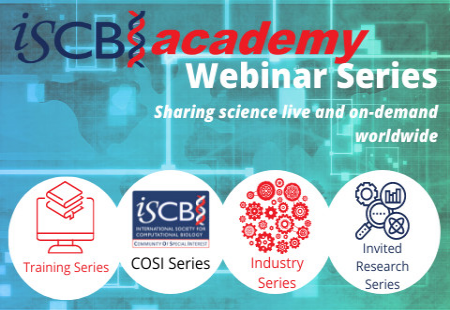

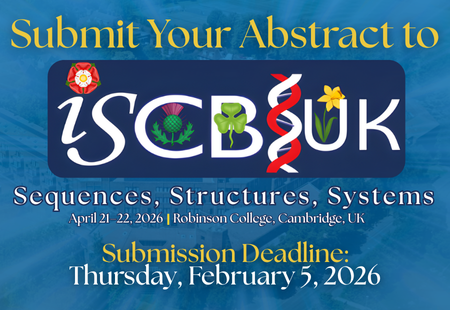
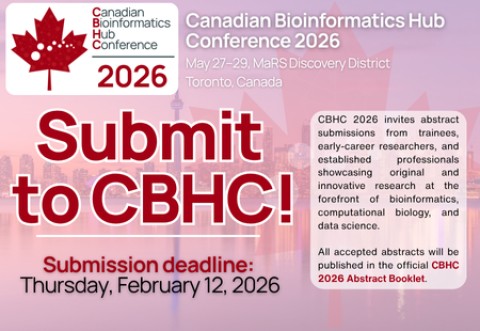
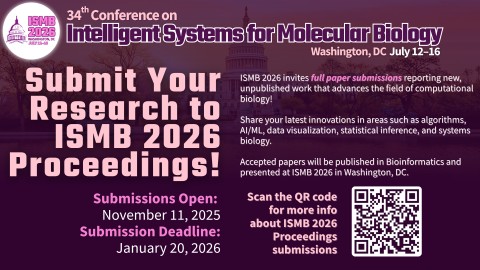
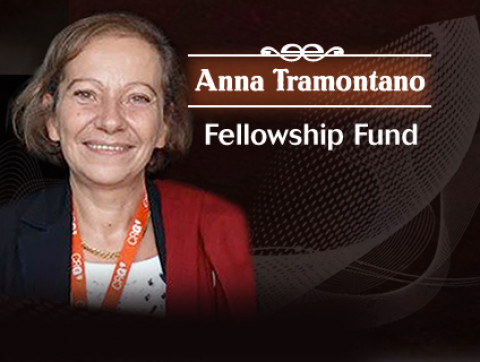
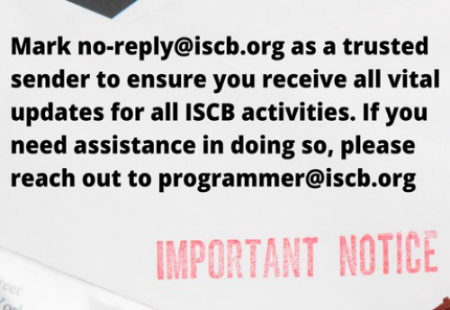















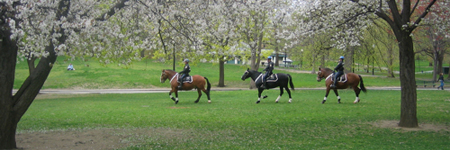
 Nonsense-mediated mRNA decay (NMD) is a cellular RNA surveillance system that recognizes transcripts with premature termination codons and degrades them. We discovered large numbers of natural alternative splice forms that appear to be targets for NMD. This coupling of alternative splicing and RNA surveillance can be used as a means of gene regulation. We found that all conserved members of the human SR family of splice regulators have an unproductive alternative mRNA isoform targeted for NMD. Preliminary data suggest that this is used for creating a network of auto- and cross-regulation of splice factors. Strikingly, the splice pattern for each SR protein is shared with mouse, and each alternative splice is associated with an ultraconserved or highly-conserved region of ~100 or more nucleotides of perfect identity between human and mouse. We have recently dissected the evolutionary history of members of this family, discovering that while the unproductive splicing dates back to the pre-Cambrian, nearly every human SR gene has its own distinctive sequences for unproductive splicing. As a result, this elaborate mode of gene regulation has ancient origins and can involve exceptionally conserved sequences, yet after gene duplication it evolves swiftly and often.
Nonsense-mediated mRNA decay (NMD) is a cellular RNA surveillance system that recognizes transcripts with premature termination codons and degrades them. We discovered large numbers of natural alternative splice forms that appear to be targets for NMD. This coupling of alternative splicing and RNA surveillance can be used as a means of gene regulation. We found that all conserved members of the human SR family of splice regulators have an unproductive alternative mRNA isoform targeted for NMD. Preliminary data suggest that this is used for creating a network of auto- and cross-regulation of splice factors. Strikingly, the splice pattern for each SR protein is shared with mouse, and each alternative splice is associated with an ultraconserved or highly-conserved region of ~100 or more nucleotides of perfect identity between human and mouse. We have recently dissected the evolutionary history of members of this family, discovering that while the unproductive splicing dates back to the pre-Cambrian, nearly every human SR gene has its own distinctive sequences for unproductive splicing. As a result, this elaborate mode of gene regulation has ancient origins and can involve exceptionally conserved sequences, yet after gene duplication it evolves swiftly and often.


